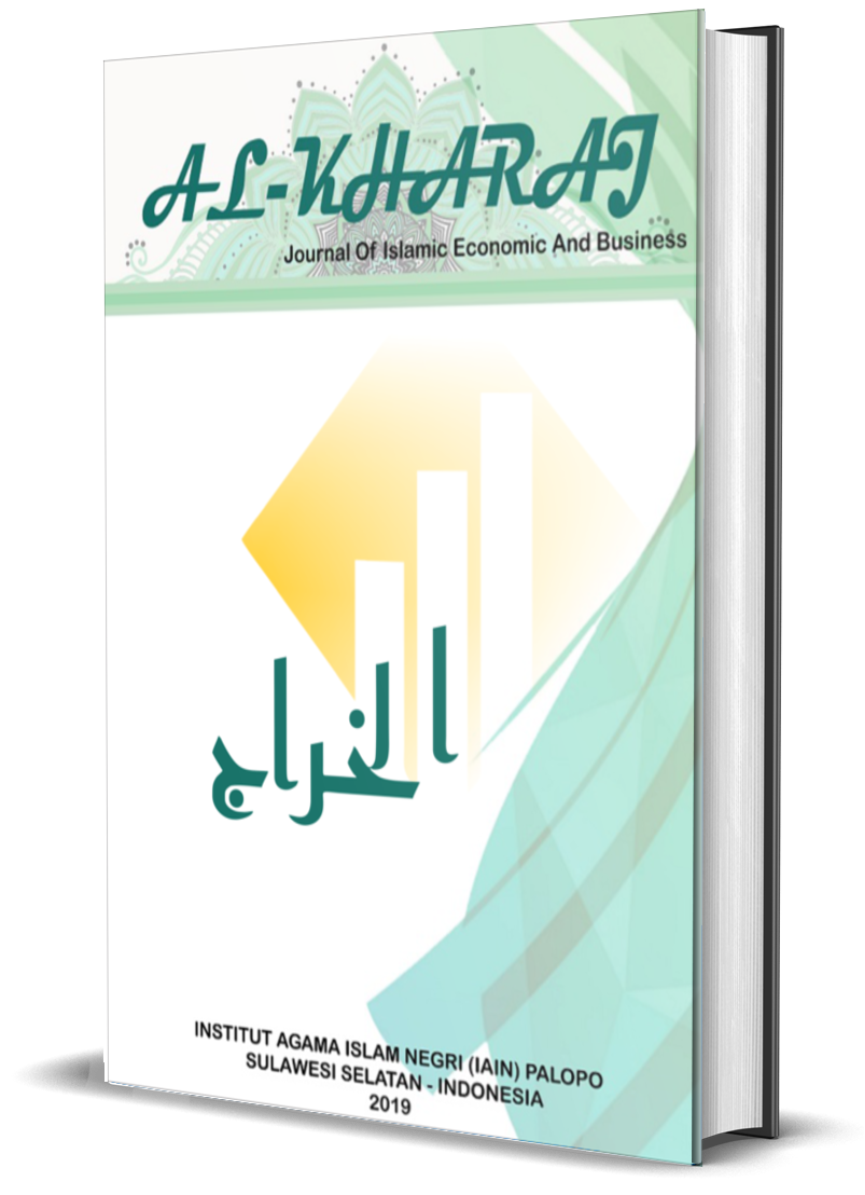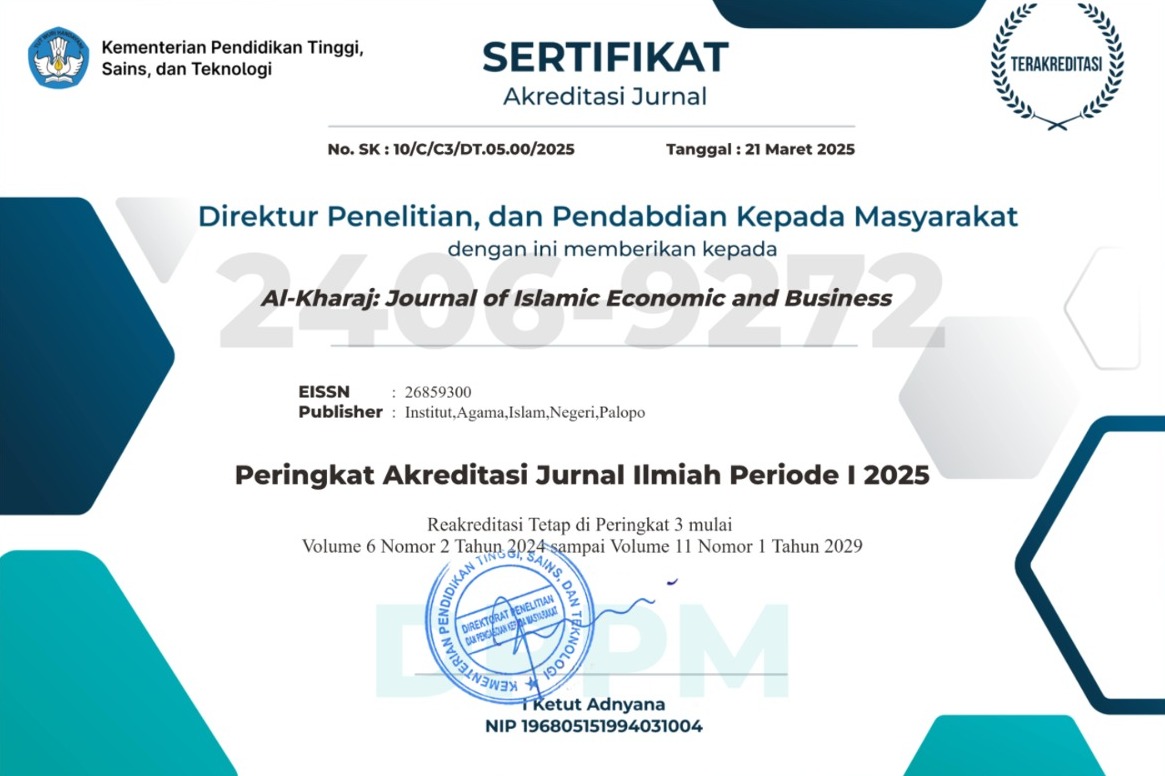Green Marketing Drives Sustainability Via Innovation in Heritage Enterprises
DOI:
https://doi.org/10.24256/kharaj.v7i3.7560Keywords:
Green Marketing, Green Innovation, Business Sustainability, Dynamic Capabilities, Cultural Heritage EnterprisesAbstract
This study examines the strategic role of green marketing in promoting business sustainability through the mediating effect of green innovation, utilizing Puing Tenane, a cultural heritage enterprise in Lamaholot, East Nusa Tenggara, as the focal case. Anchored in Dynamic Capabilities Theory, the research explores how externally oriented marketing efforts foster internal innovation and long-term sustainability in heritage-based enterprises. A quantitative design was adopted, using a structured questionnaire distributed to 150 respondents selected through snowball sampling across East Flores, Adonara, Solor, and Lembata. The data were analyzed using Structural Equation Modeling with the partial least squares (SEM-PLS) technique. The results reveal that green marketing enhances sustainability, both directly and indirectly, by stimulating innovation with in resource-constrained traditional businesses. These findings underscore the dual role of eco-marketing as both a communication strategy and driver of adaptive capability. Environmentally conscious branding and consumer education significantly impact operational transformation, particularly in enterprises rooted in local traditions. The study contributes to theoretical development by contextualizing capability-building in culturally embedded enterprises and emphasizing alignment between ecological practices and heritage values. It illustrates how sustainability-oriented marketing enhances stakeholder engagement and fosters innovation that improves market relevance and organizational resilience. Practically, this research offers insights for artisans, business leaders, and policymakers on embedding environmental values into heritage branding and production. Emphasis is placed on culturally grounded training, certification schemes, and digital storytelling that elevate sustainability narratives. The study invites further exploration into diverse heritage-based enterprises and provides a strategic pathway for achieving sustainability through innovation, culture, and ecological responsibility.
References
Aprilia, N. A. I., Widiawati, D., & Hardiani, S. (2023). Pengaruh Green Product dan Green Marketing Terhadap Keputusan Pembelian Produk the Body Shop. Business Management Research, 2(2), 103–111. https://doi.org/https://doi.org/10.26905/bismar.v2i2.10025
Ardhiyansyah, A., & Juniansyah, M. A. (2024). Have MSMEs in Indonesia focused on business sustainability? The influence of environmental orientation, technology implementation, green marketing, and innovation capability. Jurnal Riset Ekonomi Manajemen (REKOMEN), 7(2), 369–394. https://doi.org/https://doi.org/10.31002/rekomen.v7i2.1679
Ardyan, E., & Sanapang, G. M. (2023). Online Compulsive Buying and Brand Addiction in Indonesia: The Importance of Using Fear of Missing Out and Social Commerce Interactivity. Journal The Winners, 24(2), 117–126. https://doi.org/https://doi.org/10.21512/tw.v24i2.10817
Chatterjee, S., Chaudhuri, R., Kumar, A., Aránega, A. Y., & Biswas, B. (2023). Development of an integrative model for electronic vendor relationship management for improving technological innovation, social change and sustainability performance. Technological Forecasting and Social Change, 186, 122213. https://doi.org/https://doi.org/10.1016/j.techfore.2022.122213
Chen, D., Miao, X., Ma, Y., & Tang, Y. (2022). The relationship between social support and goal pursuit among Chinese college students: The mediating role of just-world beliefs. Frontiers in Psychology, 13, 1051884. https://doi.org/https://doi.org/10.3389/fpsyg.2022.1051884
Chih-Pei, H. U., & Chang, Y.-Y. (2017). John W. Creswell, research design: Qualitative, quantitative, and mixed methods approaches.
Chin, T. A., Lawi, N. H. B. M., Muharam, F. M., Kohar, U. H. A., Choon, T. L., & Zakuan, N. (2020). Effects of Green Brand Positioning, Knowledge and Attitude on Green Product Purchase Intention. International Journal of Psychosocial Rehabilitation, 24(1). https://doi.org/https://doi.org/10.37200/ijpr/v24i1/pr200166
Dangelico, R. M., Pujari, D., & Pontrandolfo, P. (2017). Green product innovation in manufacturing firms: A sustainability‐oriented dynamic capability perspective. Business Strategy and the Environment, 26(4), 490–506. https://doi.org/https://doi.org/10.1002/bse.1932
El-Kassar, A.-N., & Singh, S. K. (2019). Green innovation and organizational performance: The influence of big data and the moderating role of management commitment and HR practices. Technological Forecasting and Social Change, 144, 483–498. https://doi.org/https://doi.org/10.1016/j.techfore.2017.12.016
Gelderman, C. J., Schijns, J., Lambrechts, W., & Vijgen, S. (2021). Green marketing as an environmental practice: The impact on green satisfaction and green loyalty in a business‐to‐business context. Business Strategy and the Environment, 30(4), 2061–2076. https://doi.org/https://doi.org/10.1002/bse.2732
Groening, C., Sarkis, J., & Zhu, Q. (2018). Green marketing consumer-level theory review: A compendium of applied theories and further research directions. Journal of Cleaner Production, 172, 1848–1866. https://doi.org/https://doi.org/10.1016/j.jclepro.2017.12.002
Hair, J. F., Risher, J. J., Sarstedt, M., & Ringle, C. M. (2019). When to use and how to report the results of PLS-SEM. European Business Review, 31(1), 2–24. https://doi.org/https://doi.org/10.1108/ebr-11-2018-0203
Iskandar, Y., Ardhiyansyah, A., & Pahrijal, R. (2024). Key factors affecting business sustainability of MSMEs in Indonesia: The role of intellectual capital, social innovation, and social bricolage. The Eastasouth Management and Business, 2(02), 166–183. https://doi.org/https://doi.org/10.58812/esmb.v2i02.136
Khouroh, U., Ratnaningsih, C. S., & Rahayudi, B. (2021). Inovasi dan daya saing UMKM di era new normal: dari triple helix model ke quadruple helix model. Jurnal Manajemen Dan Kewirausahaan (JMDK), 9(2), 152–162. https://doi.org/https://doi.org/10.26905/jmdk.v9i2.6718
Kuo, F.-I., Fang, W.-T., & LePage, B. A. (2022). Proactive environmental strategies in the hotel industry: Eco-innovation, green competitive advantage, and green core competence. Journal of Sustainable Tourism, 30(6), 1240–1261.
Larbi-Siaw, O., Xuhua, H., Owusu, E., Owusu-Agyeman, A., Fulgence, B. E., & Frimpong, S. A. (2022). Eco-innovation, sustainable business performance and market turbulence moderation in emerging economies. Technology in Society, 68, 101899. https://doi.org/https://doi.org/10.1016/j.techsoc.2022.101899
Liu, S., & Wang, Y. (2023). Green innovation effect of pilot zones for green finance reform: Evidence of quasi natural experiment. Technological Forecasting and Social Change, 186, 122079. https://doi.org/https://doi.org/10.1016/j.techfore.2022.122079
Nie, L., Gong, H., & Lai, X. (2024). Green research intensity and diversified performance: the moderating role of environmental regulation. European Journal of Innovation Management, 27(2), 447–473. https://doi.org/https://doi.org/10.1108/EJIM-02-2022-0100
Ning, Y., Cherian, J., Sial, M. S., Álvarez-Otero, S., Comite, U., & Zia-Ud-Din, M. (2023). Green bond as a new determinant of sustainable green financing, energy efficiency investment, and economic growth: a global perspective. Environmental Science and Pollution Research, 30(22), 61324–61339. https://doi.org/https://doi.org/10.1007/s11356-021-18454-7
Papadas, K.-K., Avlonitis, G. J., & Carrigan, M. (2017). Green marketing orientation: Conceptualization, scale development and validation. Journal of Business Research, 80, 236–246. https://doi.org/https://doi.org/10.1016/j.jbusres.2017.05.024
Papadas, K.-K., Avlonitis, G. J., Carrigan, M., & Piha, L. (2019). The interplay of strategic and internal green marketing orientation on competitive advantage. Journal of Business Research, 104, 632–643. https://doi.org/https://doi.org/10.1016/j.jbusres.2018.07.009
Pattinson, S., Damij, N., El Maalouf, N., Bazi, S., Elsahn, Z., Hilliard, R., & Cunningham, J. A. (2023). Building green innovation networks for people, planet, and profit: A multi-level, multi-value approach. Industrial Marketing Management, 115, 408–420. https://doi.org/.https://doi.org/10.1016/j.indmarman.2023.10.016
Sanapang, G. M., Ardyan, E., & Christian, S. (2024). Understanding the important role of online Customer reviews in social commerce on Customer trust and impulse buying. Review of Management and Entrepreneurship, 8(1), 70–84. https://doi.org/https://doi.org/10.37715/rme.v8i1.4336
Schaltegger, S., & Wagner, M. (2011). Sustainable entrepreneurship and sustainability innovation: categories and interactions. Business Strategy and the Environment, 20(4), 222–237. https://doi.org/https://doi.org/10.1002/bse.682
Suki, N. M. (2016). Green product purchase intention: impact of green brands, attitude, and knowledge. British Food Journal, 118(12), 2893–2910. https://doi.org/https://doi.org/10.1108/bfj-06-2016-0295
Wang, S., Abbas, J., Sial, M. S., Álvarez-Otero, S., & Cioca, L.-I. (2022). Achieving green innovation and sustainable development goals through green knowledge management: Moderating role of organizational green culture. Journal of Innovation & Knowledge, 7(4), 100272. https://doi.org/https://doi.org/10.1016/j.jik.2022.1002
Widodo, S. (2020). Pengaruh green product dan green marketing terhadap keputusan pembelian produk elektronik merk sharp di electronic city cipinang indah mall jakarta timur. Jurnal Ilmiah M-Progress, 10(1).
Zameer, H., & Yasmeen, H. (2022). Green innovation and environmental awareness driven green purchase intentions. Marketing Intelligence & Planning, 40(5), 624–638. https://doi.org/https://doi.org/10.1108/mip-12-2021-0457
Zeng, Z., & Wang, X. (2023). Will world cultural heritage sites boost economic growth? Evidence from Chinese cities. Sustainability, 15(10), 8375. https://doi.org/https://doi.org/10.3390/su15108375
Zhang, X., Song, Y., & Zhang, M. (2023). Exploring the relationship of green investment and green innovation: Evidence from Chinese corporate performance. Journal of Cleaner Production, 412, 137444. https://doi.org/https://doi.org/10.1016/j.jclepro.2023.137444
Zhuge, K., Lin, W., Yuan, Y., He, H., & Zhang, Y. (2023). Does digital capability promote sustainable development of new ventures? The dual impact of green knowledge creation and green pressure. International Journal of Environmental Research and Public Health, 20(3), 2274. https://doi.org/https://doi.org/10.3390/ijerph20032274
Downloads
Published
How to Cite
Issue
Section
Citation Check
License
Copyright (c) 2025 Mudmainna, Salmah Sharon, Gracela Marisa Sanapang

This work is licensed under a Creative Commons Attribution-ShareAlike 4.0 International License.
Authors retain copyright and grant the journal right of first publication with the work simultaneously licensed under a Creative Commons Attribution-ShareAlike 4.0 International License. In line with the license, authors are allowed to share and adapt the material. In addition, the material must be given appropriate credit, provided with a link to the license, and indicated if changes were made. If authors remix, transform or build upon the material, authors must distribute their contributions under the same license as the original.









